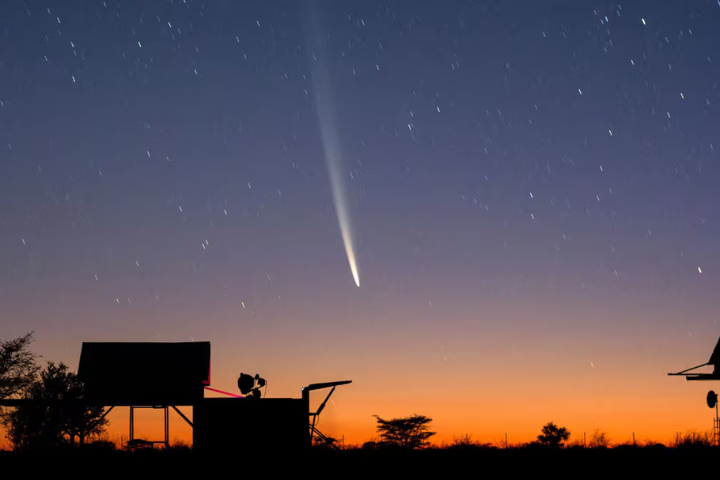Comet A3 Tsuchinshan-ATLAS, a breathtaking celestial phenomenon, has been gracefully traversing our solar system for some time now. This stunning comet, with its mesmerizing journey, will soon captivate our bare eyes starting this Saturday, October 12.
Noteworthy is the fact that this cosmic wonder boasts an extraordinary orbital period of 80,000 years, emphasizing the rarity and uniqueness of this celestial event.
It’s truly humbling to realize that the last time this majestic comet graced our skies, the Earth was a completely different place, inhabited by our ancient predecessors, the Neanderthals.
The comet is coming closest to Earth on Oct 12
After reaching perihelion with the sun last week, the comet is approaching Earth at its closest point on October 12. At 11:39 a.m. ET on this day, its distance from Earth will be just 43,911,824 miles.
This is equivalent to 9:09 pm in India. So prepare yourself to see the comet on this historic evening.
On this day, the comet’s tail will be directly pointed at Earth; it will then begin to move eastward during the next few days. Every night’s watching would be drastically different as a result.
The comet’s enormous 130,000-mile diameter is found in its head, and its 18 million-mile tail, which is made up of minuscule ice and dust fragments, is thought to extend farther.
The comet will be visible in the night sky for a few days starting on Friday, October 11. Simply point your telescope westward shortly after dusk to witness this amazing space visitor. The comet will surpass the moon as the largest object in our solar system in the next few days.
Every night next week, the comet will move three degrees higher
About 45 minutes after sunset on Saturday, October 12, the comet will be roughly 6 degrees above the west-southwest horizon.
After roughly 45 minutes, it will set. The comet will then rise three degrees in the sky each night for the following week, setting sixteen minutes later.
The comet will ascend to around 30 degrees above the horizon by October 19. It will start to fade after tonight and become invisible to the unaided eye.
Up till now, comet A3 Tsuchinshan-ATLAS has primarily been seen in the Southern Hemisphere and the Tropics. But it will now be visible to those in the Northern Hemisphere.





GIPHY App Key not set. Please check settings